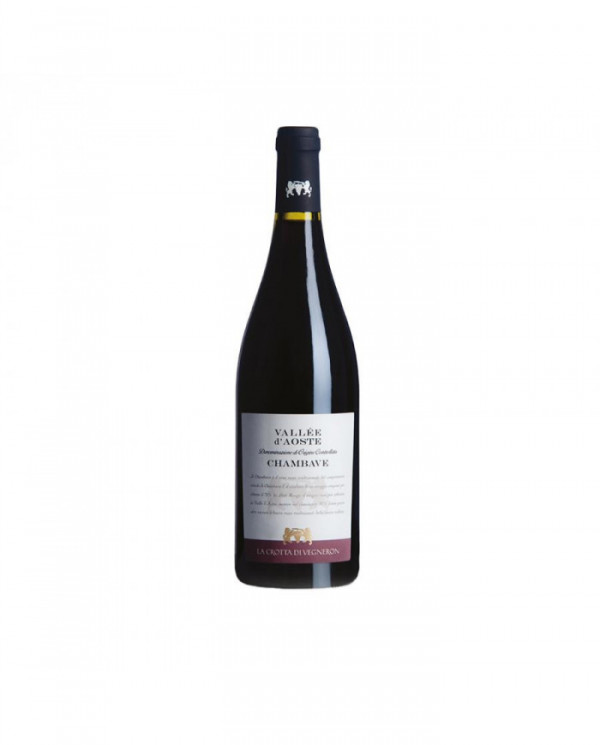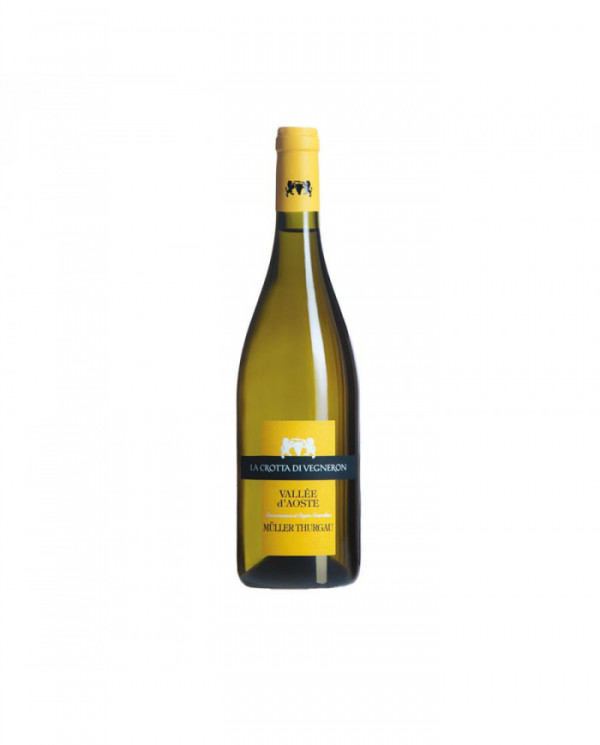Discover the Secrets of Valle d'Aosta Wines: An Explosion of Aromas and Flavors!
The Aosta Valley has always been known for its wines, but many don't know the secrets behind these products. The wines of the Aosta Valley are truly unique and enriched with a vast array of aromas and flavors. Let's discover together all the secrets of these wines, from their origins to their production.
What is the history of Aosta Valley wines?
The history of Aosta Valley wines begins in the Middle Ages, when the region was still part of Savoy. Wine production began in the 10th century, but Aosta Valley wines were already known throughout Europe during the 14th and 15th centuries. Wine production has increased over the centuries, and today the Aosta Valley is one of Italy's most important wine regions.
What wine varieties are produced in the Aosta Valley?
The Aosta Valley produces mainly red, white, and ros├® wines. The best-known white wines are Chardonnay, Pinot Grigio, Sauvignon Blanc, and Torrette. The most famous red wines are Cabernet Franc, Merlot, Pinot Noir, and Syrah. The best-known ros├® wines are Gamay, Pinot Grigio, and Pinot Noir.
What are the characteristics of Aosta Valley wines?
The wines of the Aosta Valley are characterized by great aromatic and flavor complexity. The red wines are rich with aromas of ripe fruit, spices, herbs, chocolate, and tobacco. The white wines are characterized by aromas of flowers, fruit, apple, and pear, while the ros├® wines are generally fresh and fruity.
What are the most famous wines of the Aosta Valley?
The best-known wines of the Aosta Valley are Torrette, Donnas, Fumin, Petit Rouge, Pinot Grigio, and Petit Arvine. These wines are appreciated worldwide for their aromatic and flavorful complexity.
How to pair Aosta Valley wines?
Valle d'Aosta wines are perfect with cheese, meat, fish, and vegetable dishes. White wines are ideal with fish and vegetable dishes, while red wines are perfect with meat and cheese. Ros├® wines are perfect with vegetable and meat dishes.
What's the best way to taste Aosta Valley wines?
To best enjoy Aosta Valley wines, it's important to taste them at room temperature. It's best to pour the wine into large glasses to allow the aromas to fully develop. It's important to take the time to smell the wine before tasting it, so you can fully appreciate its aromas and flavors.
Aosta Valley Wines Denomination
Are you a wine enthusiast and want to discover the hidden treasures of the Aosta Valley? In this article, we'll explore the richness and variety of wines produced in this fascinating Italian region. We'll guide you through the native grape varieties, wine classifications, the most representative red and white wines, production methods, food pairings, and much more.
The Aosta Valley region
History
The Aosta Valley's winemaking tradition dates back to Roman times. Over the centuries, vine cultivation has evolved and adapted to the region's unique environmental conditions.
Geography
Located in northwestern Italy, the Aosta Valley is a small, mountainous region characterized by a remarkable variety of landscapes and microclimates. The vineyards are mainly located along the mountain slopes, at altitudes between 300 and 1,200 meters above sea level.
Climate
The Aosta Valley's climate is typically Alpine, with cold, snowy winters and cool, rainy summers. The temperature variations between day and night favor the ripening of the grapes and the development of complex aromas and flavors.
Native vines
Petit Rouge
Petit Rouge is the most popular red grape variety in the Aosta Valley. Native to the region, it produces wines with good structure and freshness, with fruity and spicy notes.
Fumin
Fumin is another native grape variety of the Aosta Valley, used both alone and in blends with other varieties. The wines made from Fumin are intense, tannic, and long-lived.
Pri├® Blanc
Pri├® Blanc is the only native white grape variety in the Aosta Valley. It grows primarily in the higher areas, where it withstands harsh winter temperatures. The wines produced from Pri├® Blanc are aromatic, fresh and delicate.
Wine classifications
DOP
The Aosta Valley has only one DOP (Protected Designation of Origin) designation, Valle d'Aosta DOP, which includes several sub-zones and additional geographical indications to highlight wines produced with specific grape varieties and in particular areas of the region.
PGI
Wines that do not fall under the DOP designation can be classified as IGP (Protected Geographical Indication) Valle d'Aosta, a more flexible category that allows the use of a wider range of grape varieties and production methods.
Red wines from the Aosta Valley
Turrets
Torrette is a red wine made primarily from Petit Rouge, occasionally blended with other native grape varieties. With a deep ruby color, it has a fruity and spicy aroma and a smooth, lingering flavor.
Women
Donnas is a red wine made from Nebbiolo grapes (locally called Picotendro), which grow in the lower reaches of the Aosta Valley. It is a structured, elegant, and long-lived wine, with fine tannins and notes of red fruit and spice.
Red Chambave
Chambave Rouge is a red wine made from Petit Rouge, Fumin, and other local varieties. It has a ruby red color, an intense aroma of red fruits and spices, and a smooth, harmonious flavor.
White wines from the Aosta Valley
Blanc de Morgex
Blanc de Morgex is a white wine made exclusively from the Pri├® Blanc grape, grown in the highest areas of the Aosta Valley. It is a fresh, minerally, and aromatic wine, with hints of flowers and white fruits.
Petite Arvine
Petite Arvine is a grape variety native to the Swiss Valais, but also highly regarded in the Aosta Valley. The wine made from Petite Arvine is elegant and complex, with notes of exotic fruit, citrus, and minerality.
White Chambave
Chambave Bianco is a white wine made from Moscato Bianco and other local grape varieties. It has an intense, floral aroma and a fresh, lingering flavor.
Production method
Red winemaking
Red winemaking involves fermenting the must in contact with the grape skins, which impart color, tannins, and aromas to the wines. In the Aosta Valley, red winemaking is used to produce native red wines.
White winemaking
White winemaking involves fermenting the must without the grape skins, resulting in more delicate and fresh white wines. In the Aosta Valley, white winemaking is used to produce indigenous white wines.
Food pairings
I vThe wines of the Aosta Valley pair perfectly with the local cuisine, rich in flavors and traditions. Red wines pair well with meat dishes, such as venison stew or carbonada, while white wines pair well with light, flavorful dishes, such as Val d'Aosta fondue or chestnut soup.
Heroic viticulture
Heroic viticulture is an agricultural practice carried out in extreme conditions, such as those found in the Aosta Valley. The vineyards are located on rugged and steep terrain, difficult to access and work, making grape cultivation arduous and laborious undertaking. However, these very challenges give the region's wines a unique and unmistakable character.
Visits to the cellars
If you're interested in discovering the wines and producers of the Aosta Valley firsthand, you can organize guided tours of the wineries and tastings directly in the vineyards. This is an excellent opportunity to appreciate the beauty of the area and meet the people who, with passion and dedication, continue the region's winemaking tradition.
The Aosta Valley is a land of unique and fascinating wines, the fruit of a long tradition and an extraordinary terroir. From discovering native grape varieties to visiting wineries, immerse yourself in the culture and flavors of this captivating Italian region and let yourself be captivated by its wines.
The Aosta Valley is a small wine region located in northwest Italy, at the foot of the Alps. Among the most famous wine appellations in the Aosta Valley are:
-
Aosta Valley DOC: it is the main denomination of the Aosta Valley and includes a wide range of white and red wines, including Blanc de Morgex et de La Salle, Chardonnay, Petite Arvine, Pinot Noir, Syrah and Fumin.
-
Torrette DOC: is a specific denomination for red wines produced in the Torrette area, north of Aosta. These wines are made primarily from Petite Rouge and Fumin grapes.
-
Enfer d'Arvier DOC: is a specific denomination for red wines produced in the Arvier area, south of Aosta. These wines are made primarily from Petite Rouge and Gamay grapes.
-
Nus Malvoisie DOC: is a specific denomination for white wines produced in the Nus area, east of Aosta. These wines are made primarily from Malvoisie grapes.
-
Donnas DOC: is a specific denomination for red wines produced in the Donnas area, northeast of Aosta. These wines are made primarily from Nebbiolo grapes.
These are just a few examples of the Aosta Valley's wine appellations, but the region has many other interesting wineries to discover.
Map
What are the most important native grape varieties of the Aosta Valley?
Petit Rouge, Fumin and Pri├® Blanc are the most representative native grape varieties of the region.
What is the difference between DOP and IGP?
The DOP guarantees the origin and quality of wines produced in a specific geographical area, while the IGP indicates a broader geographical origin and greater flexibility in the choice of grape varieties and production methods.
What are some of the most famous red and white wines from the Aosta Valley?
Among the red wines, Torrette, Donnas, and Chambave Rosso are highly regarded. Among the white wines, Blanc de Morgex, Petite Arvine, and Chambave Bianco are among the best-known.
What is meant by heroic viticulture?
Heroic viticulture refers to the cultivation of vines in extreme and difficult conditions, such as rugged and steep terrain, which require great commitment and dedication from winemakers.
Is it possible to visit the cellars and taste the wines of the Aosta Valley?
Yes, many wineries offer guided tours and tastings to visitors interested in learning about the wines and producers. of the region. We recommend contacting the wineries directly to arrange a visit and enjoy an unforgettable experience in the heart of the Aosta Valley.











